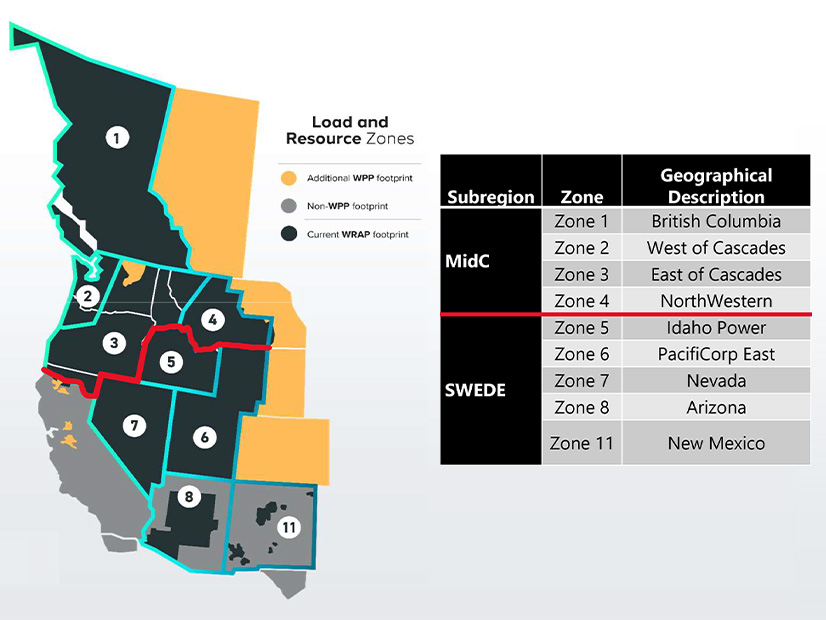The Western Power Pool’s Board of Directors has approved changes to the Western Resource Adequacy Program’s transition plan that include postponing the program’s “binding” phase by one year and reducing penalties for participants who come up short on RA obligations.
WPP said Sept. 24 that its board had approved the revised transition plan five days earlier, following through on a request by WRAP participants to push back the start of the program’s penalty phase by one year, from summer 2026 to summer 2027.
WPP staff working on the WRAP told RTO Insider through a spokesperson that the new timeline does not technically represent a delay because the program’s tariff gives WPP flexibility to begin binding operations anytime between 2025 and 2028.
Members of the WRAP’s Resource Adequacy Participants Committee (RAPC) requested a shift from the 2026 date in an April 22 letter addressed to “Western Stakeholders,” in which they warned that they face “significant headwinds” in securing energy resources in light of supply chain issues, forecasts for faster-than-expected load growth and increasing extreme weather events. (See WRAP Participants Seek 1-Year Delay to ‘Binding’ Operations.)
The RAPC on Aug. 29 voted to approve the revised transition plan, which — in addition to shifting the binding phase — also extends the WRAP’s “transition period” by one year to March 2029. (See WRAP Members Vote to Delay ‘Binding’ Phase to Summer 2027.)
Under the updated plan, during the transition period, participants who enter the binding phase but remain deficient in RA are allowed to pay a “discounted deficiency charge” if they fail to secure WRAP Operations Program capacity but show “commercially reasonable efforts” to do so.
The new plan also introduces the concept of “critical mass” into the program by setting a “participating load volume and participant threshold for a [WRAP] subregion below which participants may participate in a nonbinding manner” after the transition period ends.
Inclusion of that concept entails tariff changes that would allow participants to choose to be nonbinding for seasons when critical mass is not achieved in their subregion. The critical mass thresholds would be 15 GW of load and three participants for the Southwest/East Diversity Exchange (SWEDE) subregion, and 20 GW of load and three participants for the Northwest’s Mid-C subregion.
The transition plan changes were put out for public comment and reviewed by the WRAP’s Committee of State Representatives before being submitted to the WPP board, which also voted Sept. 19 to approve seven WRAP business practice manuals and a set of corrections to the program’s tariff.
“This is our robust stakeholder process and independent governance structure on display,” WPP CEO Sarah Edmonds said in a statement. “With the input and direction we’ve received on both the tariff and the business practice manuals, WRAP is well positioned to move forward.”
The WRAP tariff changes will now advance to FERC for approval.



